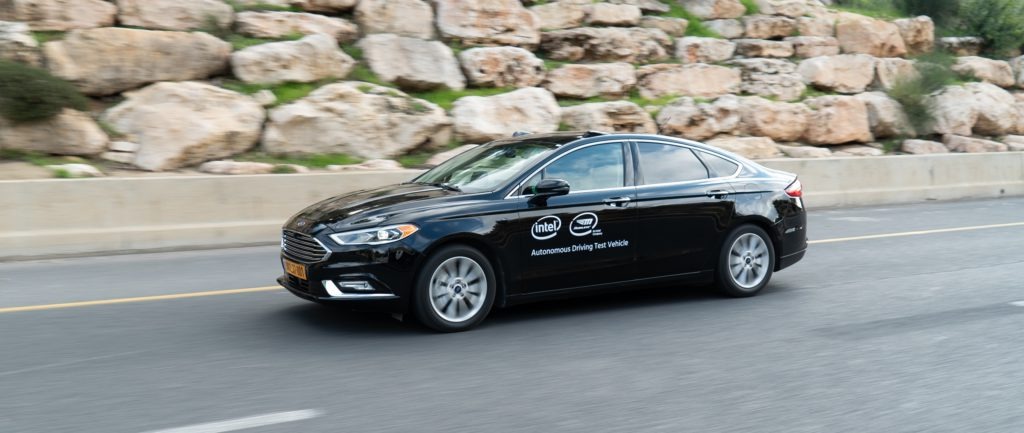Ford and Mobileye focus on collision-avoidance technology
21 July 2020

21 July 2020
Ford will work more closely with Intel’s autonomous-driving company, Mobileye, to develop improved collision-avoidance technology. The collaboration will focus on camera-based detection capabilities for driver-assistance systems.
This will include features like forward-collision warning, lane-keeping, and vehicle, pedestrian and cyclist detection. The newly developed technology will appear across Ford’s global product line-up, including the Mustang Mach-E and F-150.
EyeQ and Co-Pilot360
Mobileye will provide its suite of EyeQ sensing technology and vison-processing software to support Ford’s Co-Pilot360 system, as well as a hands-free driving feature that will be introduced next year. Upcoming SAE Level 1 and Level 2 driver-assistance systems from the carmaker will include auto high-beam headlamps, pre-collision assist with automatic emergency braking and adaptive cruise control with stop-and-go and lane-centring.
′Providing people with extra confidence while driving is invaluable, and it’s exactly what our available Ford Co-Pilot360 features are designed to do,’ said Lisa Drake, Ford’s chief operating officer in North America. ′By customising Mobileye’s excellent software and sensing technology, Ford’s great driver-assist features will continue to evolve and provide customers with confidence on the road throughout the life of their vehicles.’
Ford will display the autonomous-technology company’s name in vehicles, including its logo in the automaker’s SYNC driver-assist communication displays. The carmaker wants to make its customers aware it is building Co-Pilot360 features on top of the sensing capabilities provided by Mobileye.
′It is a privilege to extend and expand our long-standing collaboration with a company that is so committed to safety on behalf of its global customer base,’ said Amnon Shashua, CEO of Mobileye. ′We look forward to working closely together to bring these functionalities to market in the full Ford product line-up.’
An entire life cycle
The two companies have worked together for years. But this collaboration marks the first time Ford is committing to Mobileye’s technology for an entire lifecycle of its next-generation vehicles. New production Ford vehicles will also use Mobileye’s EyeQ3 and EyeQ4 for Level 1 and Level 2 advanced driver-assistance systems platforms.
EyeQ technology can support complex vision processing while maintaining low-power consumption, even when located on a vehicle’s windscreen. EyeQ4 is capable of processing multiple sensors and other inputs required for driver-assist features.
Ford is also evaluating the use of Roadbook in its vehicles. Roadbook uses anonymised, crowd-sourced data from vehicle cameras to build a high-definition map that can be accessed by cars and driver-assist technology.
Autonomous cooperation
Developing autonomous automotive technology is no easy feat. The industry is currently criss-crossed with cooperative agreements and joint ventures. Ford and Mobileye are no exception, both bosting major development projects and partnerships.
As part of a joint development plan, Volkswagen announced it had finalised a €2.3 billion investment in Argo AI, Ford’s own autonomous business in June. The German carmaker is now set to transfer its autonomous technological team over to Argo AI.
In May 2018, Mobileye signed a contract to supply eight million cars to a European manufacturer with its self-driving systems. In August 2017, the tech company signed a memorandum of understanding with BMW Group, that Fiat Chrysler Automobiles (FCA) would be the first automaker to join them in developing an autonomous driving platform for global deployment.
Mobileye was acquired by Intel back in March 2017, for €14.4 billion. The two companies’ technologies were seen to be highly complementary. Mobileye cameras and software equipped to vehicles can transmit their data to the cloud, where Intel chips and software can store and analyse the data.